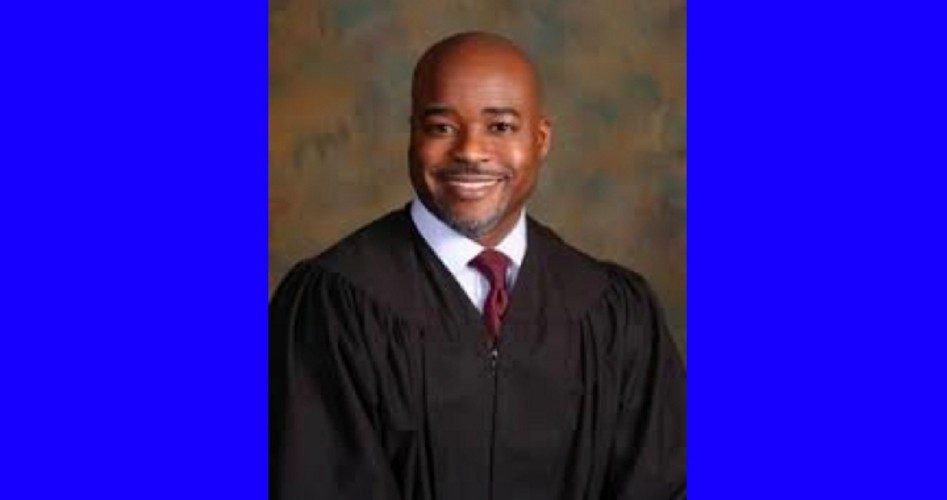
Imagine that a couple of criminals invade your home, hold your family at gunpoint, and threaten violence unless you relinquish your valuables. Now imagine that upon being apprehended and tried, the judge sentences one of the miscreants to mere probation but does issue a chastisement.
To you and your three-year-old daughter for “racism.”
But no imagination is necessary because this is precisely what happened to Kentucky residents Tommy and Jordan Gray. On March 31, 2013, two armed black men broke into their Louisville home and, after putting the couple and their young child through the aforementioned ordeal, made off with a cell phone and $1,000 the Grays had been saving for a vacation. The two perpetrators were eventually caught, and one was sentenced to 10 years in prison. But it was later, during the sentencing of the second home invader in February of this year, that the story took a truly bizarre twist.
Just prior to announcing that 27-year-old Gregory Wallace, who had pleaded to the robbery, would receive only the slap on the wrist of probation, Jefferson Circuit Court judge Olu Stevens (shown) made a point of chastising the victims for “racism.” Said he:
There’s a victim-impact statement here that bothers me … and I just have to read it…. I assume the victims in this case are white? It troubles me greatly that this statement says, “This incident has had the most impact on my daughter [Jordan Gray wrote]. She is in constant fear of black men. When we are running errands, if we come across a black male, she holds me tight and begs me to leave. It has affected her friendships at school and our relationship with African American friends.”
Judge Stevens then asked incredulously, “Really?!” He then said to the prosecutor:
You don’t have to answer for it, but I want to make that part of the record. I am offended by that. I am deeply offended by that, that they would be victimized by an individual, and then express some kind of fear of all black men. I wonder, if the perpetrator had been white, would they be in fear of all white men? The answer would probably be no.
Stevens reiterated numerous times how offended he was and told the prosecutor that perhaps he “could pass this on” to the Grays, as if victimization by a judge’s tongue should be added to victimization by a criminal with a gun.
But Stevens’ offensiveness didn’t end there. After admitting that the little girl “can’t help the way that she feels,” he continued, “My exception is more with her parents and their accepting of that kind of mentality and that fostering of those kinds of stereotypes.” And even this paled in comparison to what the judge later opined on Facebook — on a page that is now “unavailable.” As BizpacReview.com reports, “‘Do three year olds form such generalized, stereotyped and racist opinions of others?’ he wrote. ‘I think not. Perhaps the mother had attributed her own views to her child as a manner of sanitizing them.’”
Obviously, the purpose of a victim-impact statement is to relate how a crime has affected you and yours, and this effect can sometimes include the evoking of irrational fears and feelings. Are we at a point where white victims must censor these facts lest they be victimized further by racially biased judges?
Now, one of the tiresome aspects of writing news and commentary in this modern age is that so much time must be devoted to explaining the obvious. Tiny children don’t have much experience with the world and, consequently, are strongly influenced by first impressions; moreover, being highly emotional creatures not yet at the “age of reason,” their reactions are quite visceral. No small number of little girls were molested by a man and then, at least for a long time, had a fear of all men. A tiny child may be bitten by a dog and then be afraid of all dogs. These are not intellectual decisions but emotional reactions. The child sees a person or thing in the same category as a person or thing that evoked terror in him, and that fear is quite naturally triggered again. Of course, as he grows, develops intellectually, and learns about nuance, he’ll hopefully realize there are sub-categories within categories and individual variation.
In light of the above reality, it’s outrageous to assume the Grays are “fostering” their daughter’s negative emotions. And since eliminating them isn’t as simple as saying “Don’t feel that way!” — as any phobia sufferer will tell you — it’s outrageous to assume the parents are “accepting” the emotions. Moreover, suggesting that “the mother had attributed her own views to her child as a manner of sanitizing them” is beyond the pale.
As for asking if the girl would be afraid of all whites if the home invaders had been white, it’s like being surprised that a child of cat owners who is bitten by a dog is afraid of all canines but not cats. Since the Gray girl has white parents and other relatives, she has great experience with whites. But the home invasion could have been one of the first experiences she had with blacks.
Really, though, since Stevens has two children himself and isn’t a dumb man, how is it that he cannot properly interpret basic child behavior? It’s just as with the recent story in which black Indiana legislator Vanessa Summers (D-Indianapolis) publicly stated that a Republican colleague’s two-year-old son had “racist” feelings because he was afraid of her. As I wrote at the time explaining such paranoia, “When you’re prejudiced against people, you naturally think the worst of them and ascribe negative motives where none exist.” Stevens’ assumption that the Grays’ foster “racism” tells us nothing about their feelings for black people. But it speaks volumes about his feelings for white people.
Unfortunately, Stevens’ and Summers’ comments are far from the worst of their kind. A better contender for that title would be Philadelphia family-court judge Wayne Bennett, who, dismissing America’s now-frequent racially motivated black-on-white attacks, said at his “Field Negro blog,” “Here is the deal, no matter how violent some young black punks act and wild out towards groups of white people — or a single white individual, it will never make up for all the violence that was practiced against people of color throughout this nation’s history.” Writer Colin Flaherty translated this as meaning, “White people deserve it.” He later lamented, “This kind of racial hostility is now so mainstream it can be expressed casually by judges and by state legislators even when they’re performing their official duties.” No doubt.
As for Judge Stevens allowing violent home invader Gregory Wallace to walk free, the probability is high the criminal will offend again. The next victim may not live to finger him, either. And who knows? With most crime being black-on-black, the next home he breaks into may belong to Olu Stevens.
Photo: Jefferson Circuit Court judge Olu Stevens



